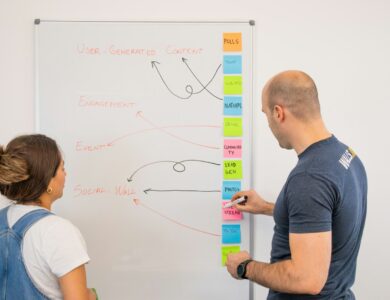
Introduction:
Ambition is often celebrated as a key ingredient for success—but when left unchecked, it can lead to exhaustion and emotional burnout. High-achieving learners frequently push themselves to the limit, driven by goals, expectations, and perfectionist tendencies. While striving for excellence is admirable, it must be balanced with self-care and emotional regulation. Educators play a critical role in helping learners achieve without sacrificing their well-being.
Understanding the High-Achiever’s Mindset:
High achievers tend to be goal-oriented, disciplined, and resilient. These traits help them excel academically and professionally. However, they are also more likely to:
- Set unrealistic standards.
- Experience imposter syndrome.
- Avoid asking for help.
- Feel pressure to always perform at their best.
Over time, this can create a cycle of chronic stress. When learners equate their self-worth with performance, any setback can trigger intense anxiety, fear of failure, and loss of motivation.
Recognizing the Signs of Burnout:
Burnout doesn’t happen overnight. It builds gradually and often presents with subtle warning signs:
- Constant fatigue, even after rest.
- Loss of interest in previously enjoyed tasks.
- Increased irritability or emotional outbursts.
- Procrastination or perfectionist paralysis.
- Physical symptoms like headaches or insomnia.
Educators and mentors must stay alert to these signs and intervene early with support and strategies.
Strategies to Support Balance:
- Promote Process Over Perfection:
Encourage learners to focus on effort, strategy, and progress rather than flawless results. Praise specific behaviors like persistence or resourcefulness. When learners feel rewarded for learning itself—not just outcomes—they experience less pressure. - Teach Goal-Setting with Flexibility:
Help learners set SMART goals (Specific, Measurable, Achievable, Relevant, Time-bound) but build in flexibility. Life happens—deadlines shift, energy wanes. Model how to adapt and reprioritize when necessary. - Introduce Time-Blocking and Energy Management:
Instead of working non-stop, teach learners to break their day into focused blocks with intentional rest. Encourage reflection on when they feel most alert and when they need to recharge. - Encourage Boundaries and Saying No:
High achievers often overcommit, fearing missed opportunities. Educators can teach boundary-setting skills and the value of selective focus. Practice role-play where learners respectfully decline additional tasks or renegotiate timelines. - Build in Wellness Routines:
Incorporate short breathing exercises, movement breaks, or gratitude journaling into sessions. These small habits can regulate stress and provide mental reset moments. - Foster Peer Support and Non-Competitive Environments:
Group collaboration over competition reduces isolation and unhealthy comparison. Encourage teams to celebrate collective wins and support one another through setbacks.
Creating a Culture that Honors Well-Being:
Cultural change starts at the top. When educators model healthy work habits, speak openly about mental health, and de-stigmatize asking for help, they set a tone of compassion and realism.
Avoid glorifying overwork. Replace statements like “I stayed up all night grading” with “I took a break to refresh before finishing.” These narratives shape what learners believe is normal or admirable.
Helping Learners Reconnect with Purpose:
When burnout hits, learners often lose sight of why they started. Periodic reflection on goals, values, and long-term dreams can reignite passion. Ask questions like:
- What inspired you to pursue this path?
- What parts of your work energize you?
- How do you define success beyond grades?
Conclusion:
Ambition and well-being are not opposing forces—they can coexist when managed thoughtfully. Educators have a profound impact on helping learners achieve sustainably. By promoting balance, emotional intelligence, and self-care, we prepare learners not just for academic success, but for a fulfilling life. Preventing burnout isn’t just about avoiding harm—it’s about creating space for joy, creativity, and authentic achievement.




